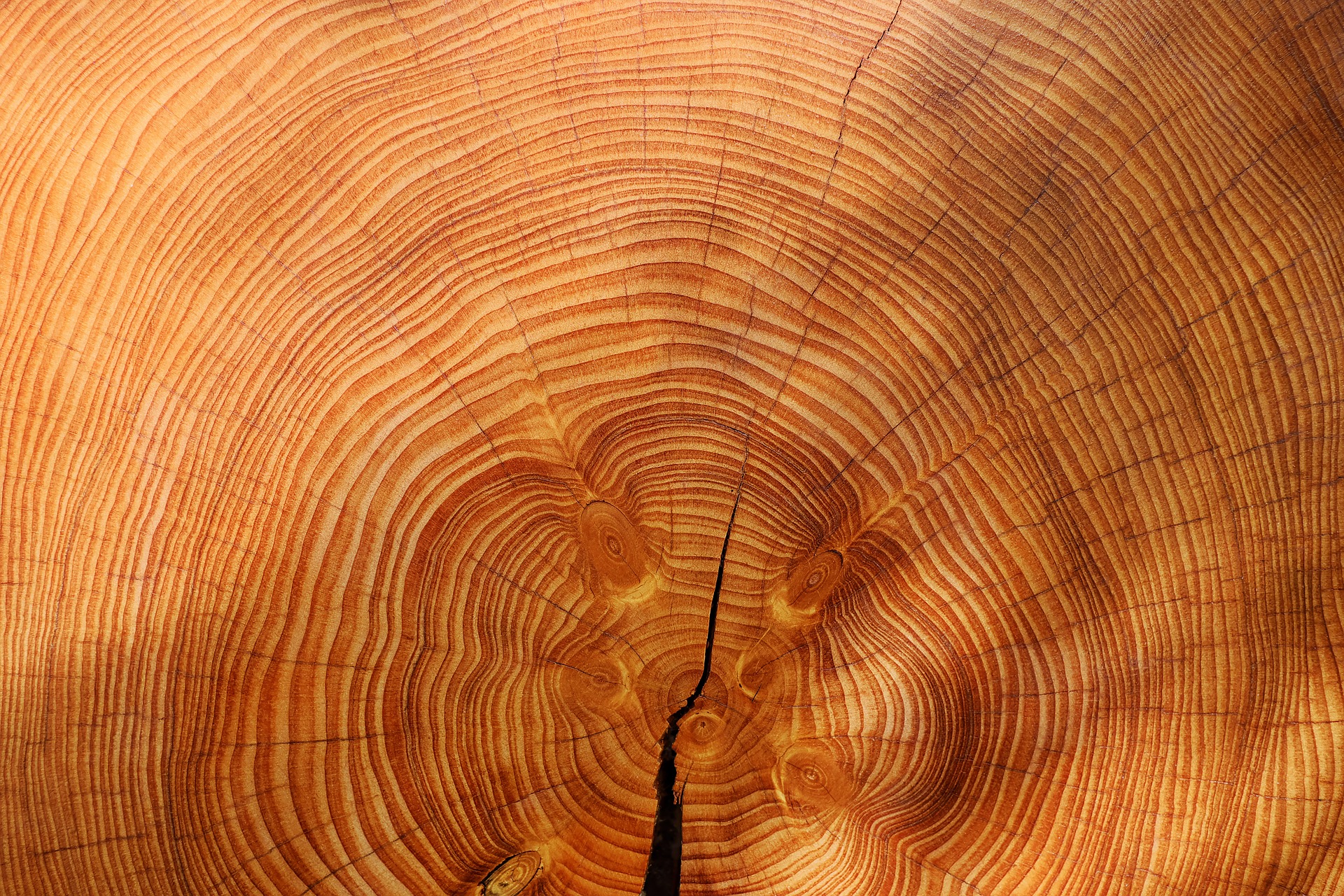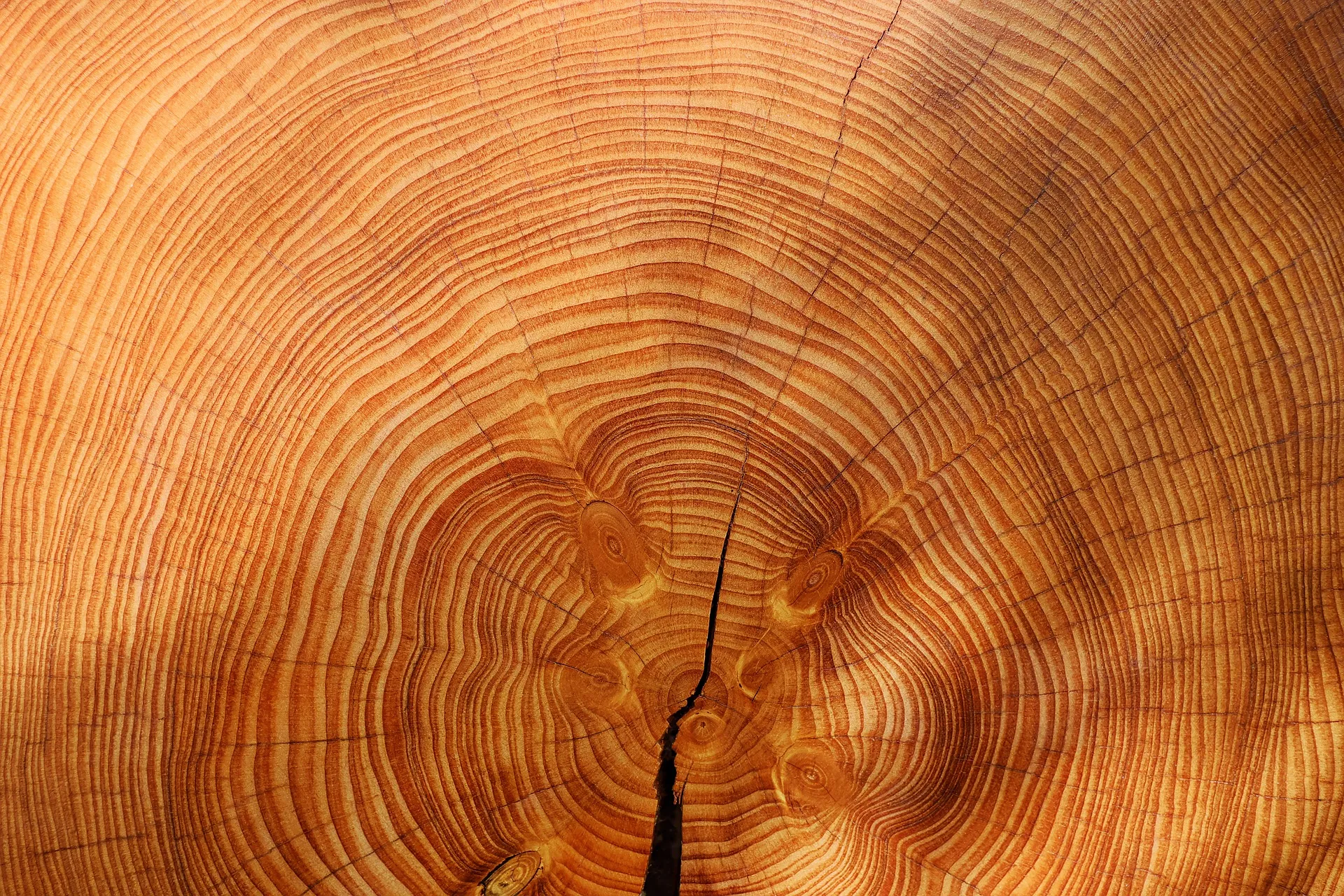


Neil Pederson’s introduction to tree rings came from a “sweet and kindly” college instructor, who nevertheless was “one of the most boring professors I’d ever experienced,” Pederson said. “I swore tree rings off then and there.” But they kept coming back to haunt him. As a future forest ecologist, he needed to learn more about the history of forests. So he read countless articles in graduate school extolling the importance of tree rings in unraveling a forest’s past. Ultimately, “I fell in love with the beauty and wealth of information found in tree rings,” he said. “Since then, tree rings have revealed to me the absolute resiliency of trees and forests. I’m hooked.” Today, he and his colleagues are using the data inherent in these ancient sources of nature to better understand the impact of climate change and carbon dynamics on forests, all the more valuable because data from long-lived trees can reach back decades, even centuries. This is far longer than modern satellite imagery, carbon dioxide measurements, and computer models, whose high-tech information gathering only stretches back about 30 years. “What tree rings can do is enhance those records,” Pederson said. “The satellite record…represents a small portion of the life of a tree, let alone the ‘life’ of a forest. Further, it only captures the weather ‘norm’ for a region and, as we are learning, climate varies over time. The weather norms or averages on your nightly weather reports are based on 30-year means. So, while satellite records are good at covering space, they might be limited in what they can tell us about forests due to shortness of these records.”

Pederson, now a senior ecologist with Harvard University’s Harvard Forest, a 4,000-acre research site, along with Laia Andreu-Hayles, an associate research professor at Lamont-Doherty Earth Observatory of Columbia University, and Mathieu Levesque, research leader of the forest management group at ETH Zurich, analyzed tree rings to determine if the information they gleaned matched the accuracy of high-tech equipment. They wanted to know whether the rings could serve as a proxy for learning more about carbon storage and climate change in forests over the long-term, and found that they could.
Forests serve as important carbon “sinks,” absorbing planet-heating carbon dioxide that has been released into the atmosphere by the burning of fossil fuels. But little is known about exactly how much carbon is stored in forests now, or in the past, and scientists are only in recent years learning about the past effects of climate change.
The scientists examined ring samples from two widespread species — tulip poplar (Liriodendron tulipifera) and northern red oak (Quercus rubra) — growing in three climatically different regions of the eastern United States, then analyzed the carbon and oxygen molecules — or stable isotopes — stored in them. They compared them to estimates obtained from satellites, and found strong agreement each year, and over time. No trees were destroyed to obtain the rings, by the way. Rather, scientists remove an increment core for each sample, each slightly narrower than a pencil.
“Our study is the first to compare stable isotopes from tree rings with the latest generations of productivity estimates from satellites,” Levesque said. “We took advantage of the newly developed satellite data, and this is the main novelty of our study.”
Their findings appear in the journal Nature Communications.

“Tulip poplar trees, one of my favorite trees, are highly sensitive to rainfall,” Pederson said. “In fact, they are considered drought deciduous. (These are plants that drop their leaves during dry or drought periods.) During the drought in 1999 in the New York City area, some tulip poplars turned yellow in August and dropped many of their leaves due to the dryness of the year. In 2005, in Kentucky, after a drought in August, the three tulip poplars I walked by every day to work started to grow new leaves in September with the return of rain. I was stunned. These observations made me think this species might be a good candidate [to study.]”
Tulip poplar is highly sensitive to the amount of water in the soil, Pederson said. Also, he added, “it is an important species for timber and ecology over a large portion of the eastern U.S. …We [also] chose the stalwart, northern red oak, because of its different physiology, importance as a species, and its value as a study species in understanding forest productivity.”
Levesque agreed. “Both species are great to study,” he said. “Their wide distribution in eastern North America and their sensitivity to climate make them ideal species for our research.” Moreover, “annual tree rings act like a thermometer and rain gauge and record climate in a very good way,” he added.
The rings, in fact, revealed that access to water was the biggest influence in annual forest growth, regardless of climate. “These broadleaf trees need moisture to grow,” Andreu-Hayles said. “Some people may think that in wet regions, moisture will be not important, but our study found that even in very humid time periods, as today, these trees are still sensitive to moisture variations. The stable isotopes measured in tree rings are highly sensitive to tracking moisture.”
Levesque agreed. “Moisture availability is one of the most important factors for temperate forest growth in the northeastern, southeastern and central U.S.,” he said. “That does not mean more moisture [means] more growth, because too wet conditions can also be a limiting factor. By ‘regardless of climate,’ we simply meant that moisture was the main limiting factor for tree growth and productivity irrespective of the local climate conditions found at the study sites.”

This is important because climate change has ushered in an era characterized by dramatic increases in extreme weather events, including prolonged drought, heavy precipitation and flooding and dangerous heat waves, thus more information about historic climate fluctuations could be useful in projecting future climate effects on forests. Experts regard the health of forests as a critical factor in mitigating carbon pollution.
Pederson noted that droughts in the 16th and 17th centuries were believed to be far worse than those in recent centuries, but it could be that climate change — by prompting more intense precipitation in some regions — has made the earlier droughts seem severe in comparison, he said. “The important thing to remember, however, is even though it is expected to rain more in the northeastern and eastern U.S. in the future, the warming associated with climate change will increase evaporation and the drought stress on plants,” Pederson said. “It is not clear what will happen.”
It’s possible that as parts of the world become wetter, and warming reduces the overall amount of water in the region during the summer, it will worsen droughts, he said. Or it will become so wet that a rise in warming will balance the increase in precipitation, he said. Or — if rain decreases — the increase in warming will amplify the drought stress in trees, even if it doesn’t seem as if the amount of available water has changed, he said.
The researchers hope to expand their research, examining more trees and additional species, and to look further back in time. “This kind of work will be extremely important considering that the longest remote sensing data started in 1982, and trees can live centuries-long,” Andreu-Hayles said.
Pederson agreed. “These kinds of studies will provide considerable insight into how these trees will respond to climate and extreme climatic events…We can learn a lot from the memories of trees,” he said.
Marlene Cimons writes for Nexus Media, a syndicated newswire covering climate, energy, policy, art and culture.
